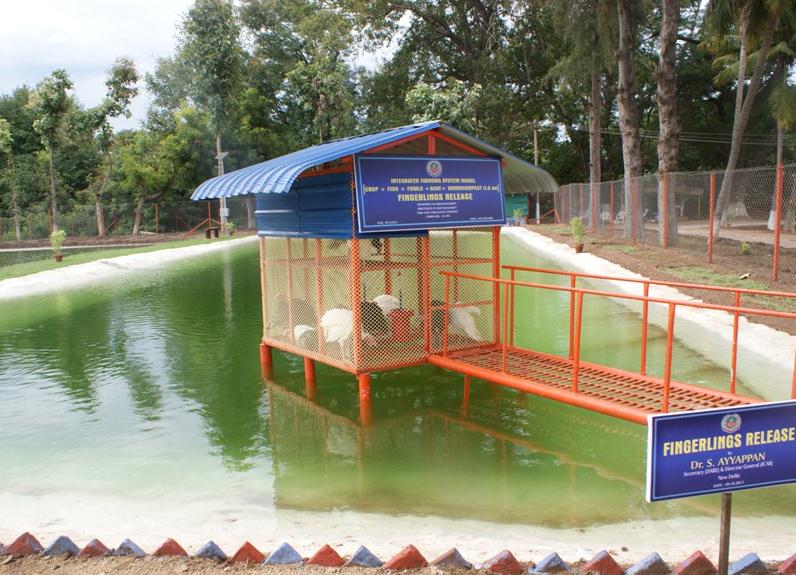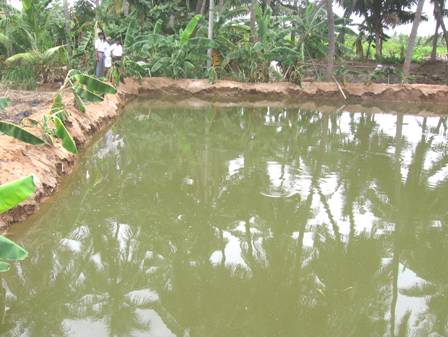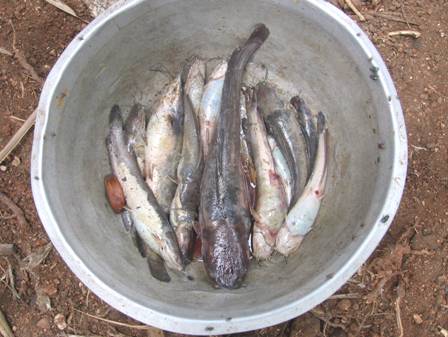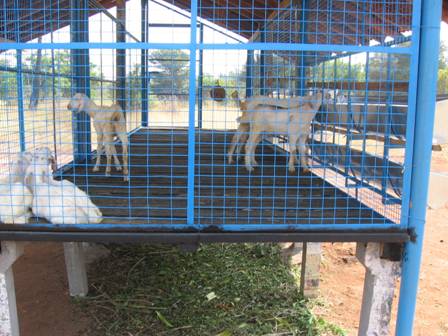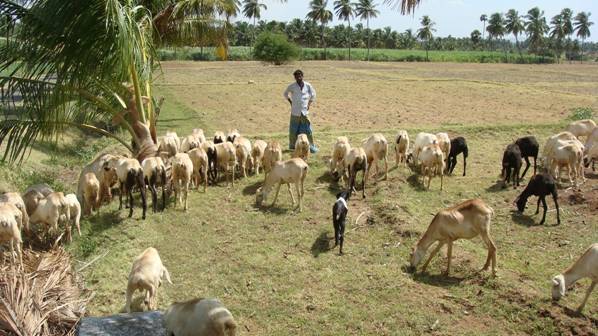
|
||||
Major Areas :: IFS :: Farming System Research |
||||
|
FARMING SYSTEM RESEARCH IN TNAU Studies on farming system in TNAU commenced as early as 1976. Two centres were identified for the study viz., Paiyur (Dharmapuri District) and Yercaud In mid eighties TNAU has approached farming system development from three dimensions viz., education, research and extension. A post-graduate programme on Farming System Management was offered. Under this programme the M.Sc.(Ag). Students have worked on rice based Integrated Farming System at Tamil Nadu Rice Research Institute, Aduthurai involving dairy, goat, poultry cum fish culture and at Agricultural Research Station, Aruppukottai under dryland situations. The results of the studies are furnished below: Wetland: At TRRI, Aduthurai, an effort was made to study the role of poultry-cum-fish culture as a component in mixed farming under small farm conditions. The study was conducted in a holding of 2.0 ha. In one hectare conventional cropping system (CCS) as practiced by farmers was taken up. In IFS area an extent of 0.96 ha was utilized for crop activity, and an area of 0.04 ha was allotted for poultry cum fish culture. The results indicated a net income of Rs.20,188 per ha and Rs.11,730 per ha in IFS and CCS respectively. The additional employment generated from IFS was 150 mandays over CCS. Field experiments were carried out at the Tamil Nadu Rice Research Institute, Aduthurai with duck cum fish culture as a component in the mixed farming. Two farm holdings each with the size of one hectare were selected for conducting the study. In one holding, conventional cropping as practiced by farmers was followed. In another plot, cropping was practiced in an area of 0.973 ha and an area of 0.027 ha was allotted for duck cum fish culture. Economics of mixed farming was compared with existing cropping system. A net income of Rs.13,790/- was obtained from an hectare of existing cropping system (Kuruvai - Thaladi rice - rice fallow Pulse) and a net income of Rs.22,676 was obtained from the modified cropping system (Rice - rice - cotton / maize) even with an area of 0.973 ha allotted for cropping. The additional profit from modified cropping alone was Rs.8,886/-. From duck cum fish culture as a component in mixed farming system a net profit of Rs.1,441/- was obtained from an area of 0.027 ha. Totally an additional income of Rs.10.327/- was obtained from the mixed farming system over existing cropping system. The existing cropping system could generate only 252 mandays whereas mixed farming system generated 396 mandays. The additional employment generated from mixed farming was 144 mandays over and above the existing method of cropping. Another comparative study was carried out with rice-rice-rice fallow pulses as conventional cropping System (CCS) and with rice-rice-rice fallow blackgram/rice fallow cotton and fodder grass along with 3 milch animals as Integrated Farming System. The results revealed that a net return of Rs.8,422/- was obtained from CCS and Rs.10,912/- was obtained from IFS. Net return from dairy enterprise was Rs.8,896/-. The additional net income of Rs.11,477/- was obtained from the dairy based mixed farming over the existing farmers’ method of cropping. Inclusion of dairy unit generated an additional employment of 190 mandays. The total additional employment generated by dairy based mixed farming was 396 mandays over the cropping system. Research on Integrated Farming System was done both at on-station and on-farm involving poultry cum fish culture and mushroom production under lowland situation; dairy and biogas under irrigated situation; goat rearing and agro forestry under rainfed situation at TNAU Coimbatore. Wetland
Gardenland Under gardenland situation, dairy and bio-gas were integrated in 1.00 hectare area. The dairy unit comprised of 3 graded jersy cross breed milch animals with two calves. For effective recycling of farm and animal waste, a bio-gas unit of 2 cubic metre capacity was installed. The results of the study revealed that the entire system produced a net income of Rs.20, 702 per hectare per year. Dryland A study was taken up integrating crop and goat rearing under dryland in one hectare, considering small and marginal farmers of Tamilnadu.
Integrated farming system for rainfed black cotton soils Unlike irrigated agriculture, rainfed farming is with full of uncertainties to the extent that getting a normal crop itself is uncertain. To offset the innate difficulty of uncertainties such as uncertain rainfall, heavy downpour and consequent damage of crops and uncertain yield and income, exclusive concentration on cropping technologies may not give a practical solution to the farmers. The solution lies in changing the agricultural system itself integrating cropping with maintenance of other enterprises. Keeping this objective in view, a well designed farming system has been developed for the benefit of rainfed black cotton soil farmers. Integration of cropping, livestock (goat) and orchard crops is profitable. In an area of four acres, including livestock (1-5 Tellicherry goats) along with cropping 3 acres and orchard crops (one acre of ber or guava or any marketable drought tolerant fruit tree), the additional income obtained over cropping alone was on an average, Rs.3300/-. Depending upon the extent of holding, the size of the components may be altered. Such integration is not only for higher income in favourable years but also to safeguard the farmers from getting disaster income in poor rainfall years. |
||||
| Home | Seasons & Varieties | Tillage | Nutrient Management | Irrigation Management | Weed Management | Crop Protection | Cost of Cultivation | © All Rights Reserved. TNAU-2013. |
||||
